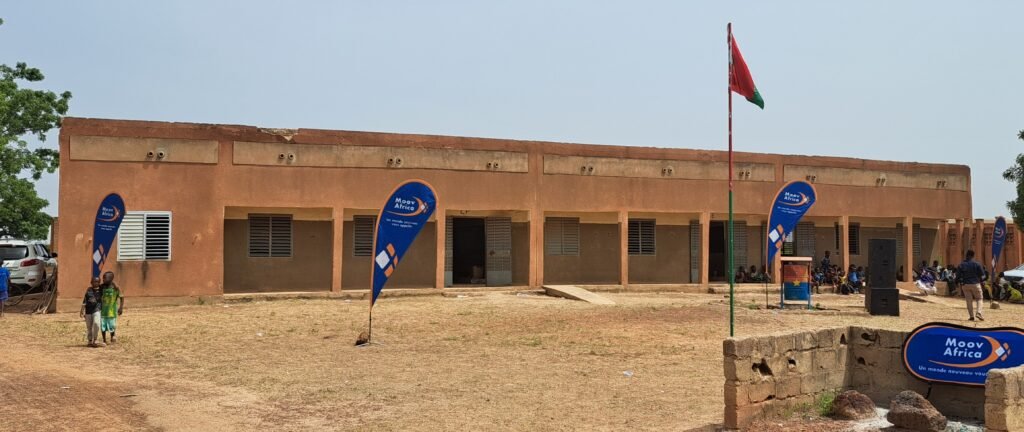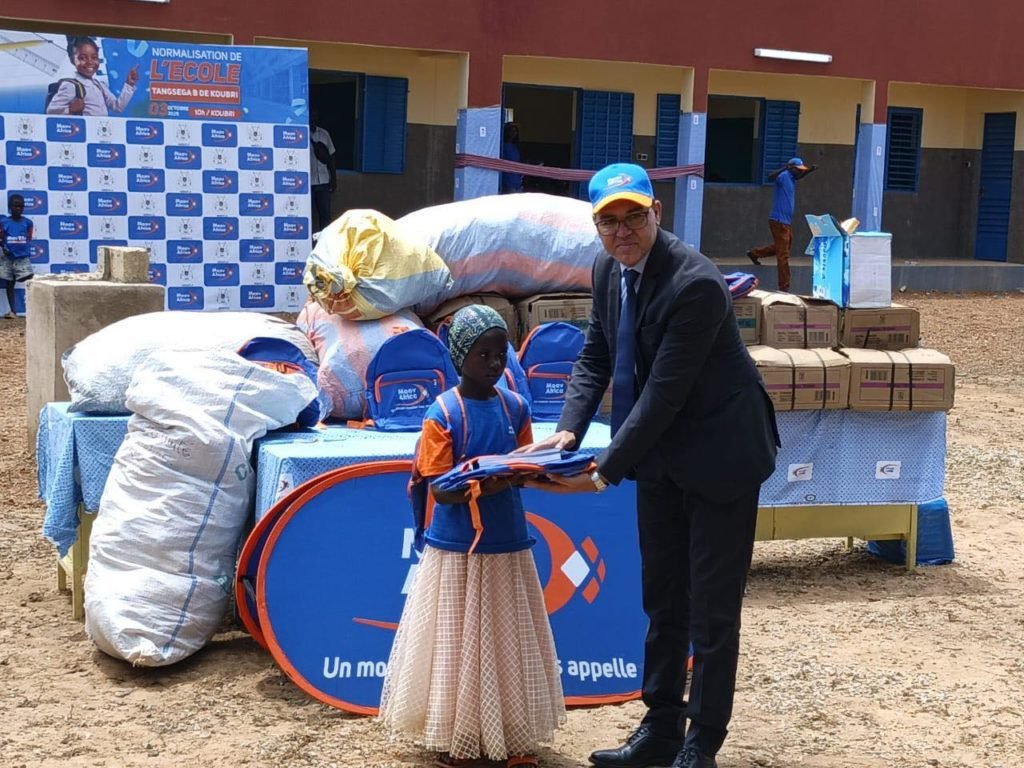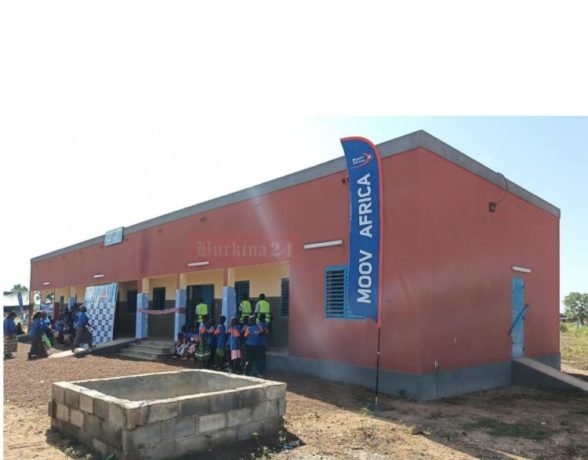In a landmark event that signals a fresh chapter for education in Burkina Faso, Tangsega B School in Koubri has been transformed with modern facilities, thanks to a major investment by Moov Africa. The official commissioning of the upgraded school infrastructure took place recently, with government dignitaries in attendance, and marks yet another step in narrowing the gap between rural schools and those in urban centres.
At the inauguration, Dr Aminata Zerbo/Sabane, the Minister of Digital Transition, Postal and Electronic Communications, praised the effort. She emphasised that Moov Africa’s involvement reflects strong synergy with national development plans aimed at elevating educational standards across the country. Also present was Jacques Sosthène Dingara, Minister of Basic Education, Literacy and Promotion of National Languages, who served as the guest of honour. Their presence underscored the state’s recognition of private-sector contributions to public education.
Table of Contents

What’s Inside the New Facilities
The upgrade is comprehensive. Students and teachers at Tangsega B can now benefit from:
- Three fully-equipped classrooms, built to standard, giving more comfortable and better-lit spaces for learning.
- A school canteen, ensuring that learners have access to nutritious meals during school hours.
- A borehole, providing clean and safe water—something that often constitutes a major challenge in many rural schools.
- Storage facilities for food and supplies help the school manage logistics and reduce waste.
- Solar-powered electricity, ensuring an uninterrupted power supply, is vital for evening studies, digital learning aids, and general comfort.
These additions are not just cosmetic. They are set to improve the health, safety, learning outcomes, and general well-being of all who attend the school. Teachers, too, will be better able to deliver lessons without the usual disruptions caused by infrastructural limitations.

Why This Matters: Moov Africa, Education & Social Impact
Moov Africa has long positioned itself not merely as a telecommunications provider, but as a stakeholder in community development. This project at Tangsega B is consistent with that vision.
For one, education is among the key pillars of social development. When schools are well resourced, with clean water, proper classrooms, reliable power, and food facilities, barriers to learning—especially in underserved rural areas—are reduced. Girls and boys also benefit equally, since many school attendance issues stem from a lack of basic amenities.
By bringing these improvements to Koubri, Moov Africa is aligning with Burkina Faso’s government goals to expand access to quality education, reduce literacy gaps, and promote a more inclusive system. The handover of the infrastructure was more than a symbolic gesture; it demonstrates tangible commitment.
Government officials, in their remarks, spoke of the partnership as a model for public-private collaboration. Dr Zerbo/Sabane pointed out that such partnerships can accelerate reaching national benchmarks for education, digital inclusion and infrastructure. Minister Dingara also expressed optimism that schools like Tangsega B will benefit students for many years, and that the investment will inspire other corporate actors to step forward.
Challenges Ahead & Long-Term Prospects
While the inauguration of this modern infrastructure is a cause for celebration, it also raises important questions about sustainability and replication.
Firstly, maintenance will be key. New buildings, solar power systems, and boreholes—all require regular upkeep. Without a plan for long-term maintenance, the risk is that facilities might degrade over time. It will be crucial for school authorities, local government, and Moov Africa to establish clear arrangements for maintenance, budgeting, and community involvement.
Secondly, scaling up this model is essential. Many schools across Burkina Faso (and indeed, in similar contexts across West Africa) continue to suffer from inadequate facilities. If the Tangsega B project is successful, it could serve as a template for future interventions. Moov Africa and other stakeholders might consider extending similar support to many more schools.
Thirdly, teacher training and curriculum support accompany physical infrastructure. While better classrooms and facilities enhance the learning environment, they achieve maximum benefit when teachers are empowered with pedagogical tools, resources, and continuous professional development. The presence of modern infrastructure can raise expectations; teacher support must follow.
Finally, digital inclusion is implicitly bolstered by a reliable power supply. Solar energy not only lights classrooms but can also enable digital learning tools—computers, projectors, and internet connectivity. Leveraging this will require planning so that schools can fully exploit the new infrastructure.

Looking Ahead: Education as a Foundation
The upgraded facilities at Tangsega B School in Koubri symbolise hope. They point to what is possible when corporate social responsibility meets governmental support and when investments are focused on the essentials: water, shelter, food, learning tools, and electricity. For the children who enter those classrooms, the difference will be profound.
In the years to come, this project could transform lives—not just by improving exam outcomes or literacy rates, but by instilling in students the belief that their environment deserves investment. It sends a message: that education in rural Burkina Faso is valued, and that with the right partners, everyday schooling challenges can be addressed.
The story of Tangsega B shouldn’t remain an isolated success. It should fuel conversations, partnerships, and actions in other municipalities and at the national level. The hope is that Moov Africa and others won’t stop here. That this can become part of a sustained movement.
Join Our Social Media Channels:
WhatsApp: NaijaEyes
Facebook: NaijaEyes
Twitter: NaijaEyes
Instagram: NaijaEyes
TikTok: NaijaEyes
READ THE LATEST EDUCATION NEWS




